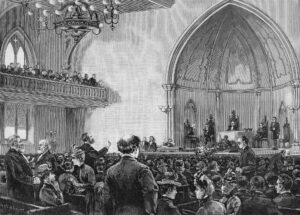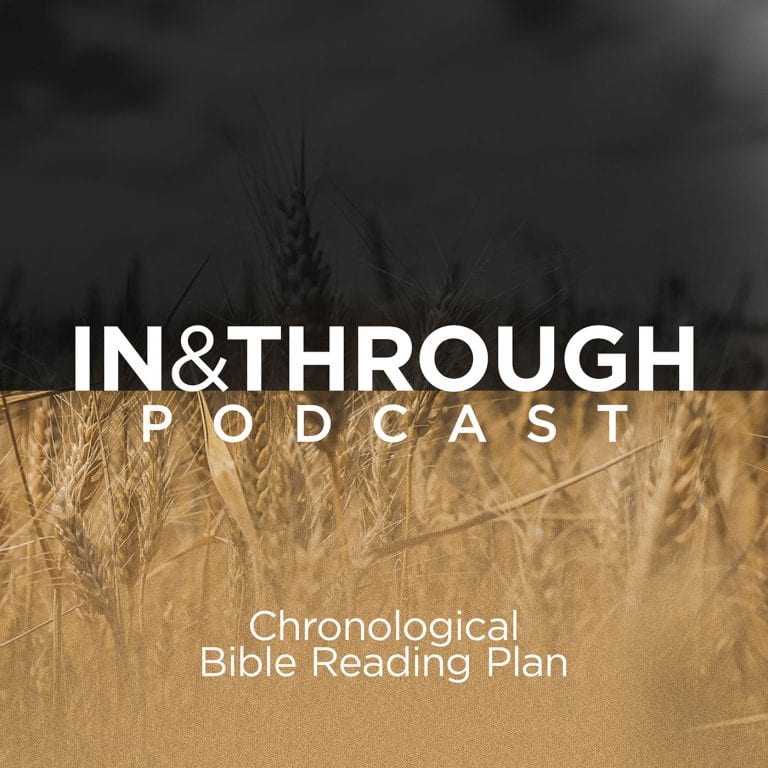The average Canadian does not read the Bible often—if at all. But they do know what “everyone knows” that the Bible is full of contradictions. To many Canadians, this is one of several reasons why you should not take the Bible seriously.
Usually, when people say things like this to me they do not give any examples. But occasionally I talk to someone who will give me an example. One such example is the so-called “contradictions” in accounts of Jesus healing the man who had a legion of demons possessing him (Matt 8:28-34; Mark 5:1-20; and Luke 8:26-39). In this case, there are said to be three significant problems.
First, the accounts differ on where this happened, the region of Gerasenes or Gadarenes? Second, it is too far from water for the story to be true (or so the accusation goes). Finally, why do Mark and Luke say there is one demoniac while Matthew says there are two?
How should we respond to such objections?
First, don’t say, “The problems do not matter. Stop asking questions and just believe.”
This is the wrong way to address the problems and the person who raises the problems. If you are not sure what to say, or if your attempts to answer the questions are easily shot down, do not take it personally. Acknowledge that you do not have an answer right now. Promise that you will either get back to the person with an answer or that you will connect them with a person who can handle their questions.
It is not unusual that when a church or group just keeps saying, “The problem does not matter, stop asking questions and believe,” then what happens is that the person asking the questions ends up feeling as if the group is saying to them, “You are the problem.” This is not good.
Second, the questions are valid, because Matthew, Mark and Luke are making the claim that they are telling you a true story of what actually happened.
Ironically, the church or group that says, “The problems do not matter, stop asking questions and just believe,” are basically agreeing with theological liberalism that the story did not happen, and they have some metaphorical or symbolic meaning. Now theological liberalism is wrong about this. You cannot squish the Gospels into an ahistorical metaphorical box without doing violence to the Gospels.
Both a casual and a close reading of Matthew, Mark, and Luke show that they understand the difference between parable, metaphor, symbol, and history. When it comes to the story of the demoniac, they are telling us something historically true and theologically significant that Jesus did in real life.
Third, remember that Christians have been reading the Bible very closely for two thousand years.
So it is unlikely that anyone is going to come up with a problem that no one has noticed before – and thought through well.
Fourth, the region of the Gadarenes and the region of the Gerasenes are two ways of saying the same region.
Sometimes if you look at Google Maps, you will be surprised to find that the map does not give you the street names that you are familiar with. You did not know that some of the main roads in your city have both a name and a route number. I used to be a minister in Eganville. Sometimes writers and speakers would refer to the area as Renfrew County or “the Valley.”
The writers and speakers were not contradicting each other, just as Google maps is not contradicting you. In biblical times there were Jewish names, local names and Roman names. This practice is very common in human experience and is common in the Bible.
Fifth, the more archeology develops, the more that the Bible is vindicated and shown to be accurate.
The ESV Study Bible gives a handy summary of this in the text that we are considering. There was a large town called Gerasa about 55km from the sea, but in more recent years, they have discovered a smaller town called Gerasa that is by the sea.
There was also a town called Gadara about 10km away. The writers use the word “region.” So we have two valid ways of referring to the region and a more precise way of describing where the event took place. By the way, there is a fifth-century church to mark the spot of the encounter between Jesus and the demoniacs.
Sixth, there were two men delivered from demons by Jesus, and there is no contradiction in the accounts.
The writers are doing something that you and I do all of the time. I will tell a story about a conversation that I have had with a person, and not mention the silent friend or wife who listened to everything that happened. I might tell the same story again later to a different audience, and mention that there was a couple.
I have spoken of my trip to Angola, and my experience of speaking through translators. In one context I might mention that there was only one translator, in another context mention that I was speaking to two language groups in the same audience, and had a translator for each language group. In no case am I hiding anything or contradicting myself. I will tell the story to make a point, and sometimes the story is helped by including different information.
Seventh, the same incident can be significant for different reasons.
Matthew wants to briefly emphasize the power of Jesus over a massive demonic presence, and that the locals wanted Jesus to leave. Mark and Luke share Matthew’s interest but want to add the significant detail of what one of the two men wanted to do in response to Jesus delivering them, and what Jesus said to that man.
Friend, I encourage you to trust Jesus, the Word made flesh, and trust the Bible, God’s Word written. Read, mark, learn and inwardly digest the Bible for, “All Scripture is God-breathed and is useful for teaching, rebuking, correcting and training in righteousness so that the servant of God may be thoroughly equipped for every good work” (2 Timothy 3:16-17 NIV).
























